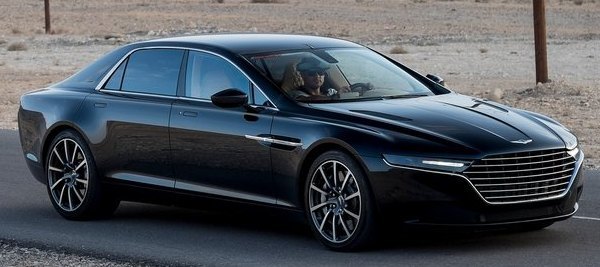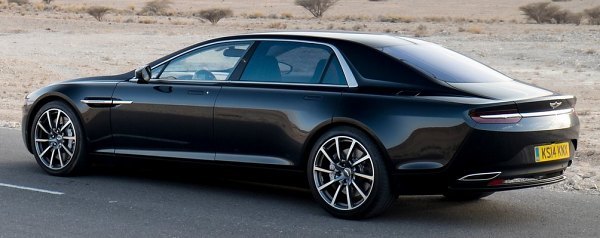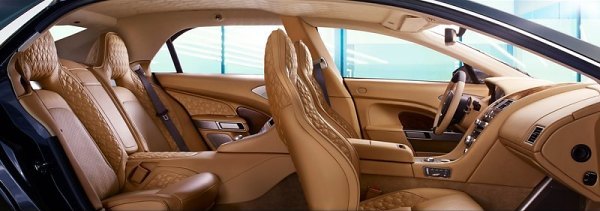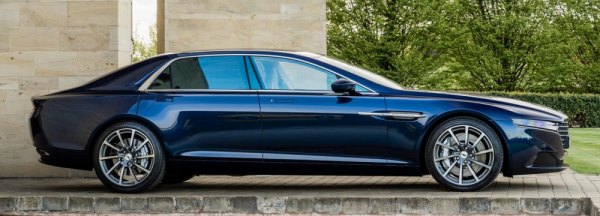|
|
|
Published
on 16
Feb 2016
|
All rights reserved.
|
|

|
The original Aston Martin Lagonda, born in 1978,
impressed me a lot since I first read it from newspaper in my
childhood. There were no other luxury sedans quite like it, combining a
supercar-style low-slung wedge design with a powerful V8 and a
luxurious interior. Its extreme prices and exclusivity also earned it a
unique place in automotive history. Now after nearly 4 decades,
Aston is resurrecting the idea as well as the nameplate.
Although Aston already got a 4-seater called Rapide, it is actually a
4-door sports car rather than a true luxury sedan. Those sitting at the
back of Rapide will find very limited head and legroom, while the small
door
apertures make ingress and regress hardly graceful. That's why people
buy it to drive rather than to be chauffeured. In contrast, Lagonda is
supposed to be a limousine driven by chauffeur. The boss always sits at
the back thus it has to be a lot more accommodative. What separates the
Lagonda from the usual Mercedes-Maybach,
Bentley and Rolls-Royce is that it should look like a sports car, and
it should be ultra rare, just like the original. How rare? By the
time its production ceases at the end of this year, there will be about
150 cars finished. Each
commands an eye-watering US$1 million or £685,000. Yes, that's
about the price of 3 Bentley Mulsannes!

|
Since Aston is going to use the Lagonda brand name for more
models in the future, in particular a luxury SUV that it counts so much
to return to profitability, the new luxury sedan is called Lagonda
Taraf to avoid confusion. Taraf means “extreme luxury” in Arabic. This
also implies that the car is designed specially for the Middle East,
just like the original Lagonda. Originally, that was a sensible plan,
because the oil-producing countries have plenty of super riches who
appreciate a large, flamboyant and bespoke luxury car. Unfortunately,
oil price
plunges since last year and hurts the buying power of Arabic countries.
As a result, Aston decided to sell the Lagonda also in the rest of the
world. Even so, the original plan for 200 cars is unlikely to be
fulfilled.
Unsurprisingly, to cut development costs and time the Lagonda Taraf is
built on a stretched version of the Rapide platform. Some 200 mm is
added between its axles to liberate about the same amount of rear
legroom, which means aplenty. In addition, its roof is raised by 40 mm
compared with Rapide. That doesn’t sound much, but as the roof line
gets a lot flatter, the boss should enjoy plenty of headroom, too.

|
Compared with other limousines, however, the Rapide-derived
interior is not luxurious enough. Although it is trimmed with expensive
leathers everywhere as expected, the boss gets few comfy features or
toys to play with. There are no reclining and massaging seats, no wine
cabinet, no fold tables, no classy sound and infotainment systems nor
an especially good climate control. If you want to travel a long way,
conventional limousines should be a better option. Moreover, despite of
the abundance of knee room, the rear seats of Lagonda is rather narrow,
blame to the prominent transmission tunnel. The occupants sit much
lower than the case of Rolls-Royce or Bentley thus it is not suitable
to old people with knee pain.
Up front, it is a little disappointed to see the same dashboard as the
Rapide, especially considering the price of this car. That said, its
buyers are unlikely to care about the working environment of
chauffeurs.

|
So what’s the point of Lagonda? The answer always lies first
on its looks. Although modern pedestrian safety regulations no longer
allows a wedge front end like the original Lagonda, the new car is
still easily the sportiest, most dramatic looking limousine in the
world. Its bonnet looks endless long. Its fast windshield, low shoulder
line and a short boot all point to a sports car shape. Unlike the
Rapide is it not a just a modified sports car but a bespoke design. Its
larger glasshouse and extra length bring more presence. I bet 99
percent of its buyers have their purchasing decisions based on its
looks alone. It is just that kind of car that you would say “I must buy
it” from the first sight.
The Taraf is built by the special Q department which was previously
responsible for the limited edition One-77. Its unique body shell is
made of carbon-fiber, allowing the car to keep the same 2-ton kerb
weight of Rapide. There are no exterior parts shared between the two
except the windscreen. Underneath, however, almost everything is the
same – the same 5935 c.c. V12, the same ZF 8-speed automatic
transmission, the same all double-wishbone suspensions with adaptive
dampers, the same axles, brakes and electronics. Strangely, its engine
is rated at 540 horsepower only, 20 less than the latest Rapide,
although peak torque remains at 465 pound-foot. Because of larger
frontal area, its top speed drops from 203 to 195 mph. 0-60 mph takes
0.2s longer at 4.4 seconds.

|
The V12 has been recalibrated for smoother throttle response to suit
the limousine role. Compared with the turbocharged V12 of Rolls-Royce
Ghost, Mercedes-Maybach S600 or the V8 turbo of Bentley Mulsanne Speed,
Aston Martin’s naturally aspirated V12 feels much weaker at the low end
of rev range. It needs to be revved to deliver. Fortunately, it still
produces terrific sound at higher revs. The exhaust note is suppressed
slightly but still easily rocks your soul with its sonorous soundtrack.
It’s not the fastest limousine available, but it is certainly the most
special.
The driver seat is mounted as low as Rapide thus you feel like driving
a sports car. Forward visibility from the fast windscreen gets even
poorer as the driver seat is set further back. However, to drive the
Lagonda feels very close to the Rapide. Despite of the 200 mm longer
wheelbase, it still feels pretty agile. The low center of gravity means
it is well tied down to the road in fast corners, displaying none of
the roll that troubles conventional limousines. It grips hard and stops
well. Its hydraulic steering might be set lighter but still delivers
honest feel to inspire driving confidence. The sports car genes of
Rapide are largely intact.

|
On the flipside, the Lagonda is not as comfortable as a true
limousine should be. The sports car chassis setup and lack of air
suspension means it is hopeless to match the magic carpet ride of its
rivals, even though it does ride smoother than the Rapide. Ditto its
lack of sound insulation throughout the cabin, window frames, door
apertures etc. It is just not possible for a low-budget project like
this to be engineered to world-class standards. As a result, on
motorway you will find more wind and road noise than desired.
But do these shortcomings really matter? I suppose not to its target
buyers, who should have plenty of Rolls-Royces, Bentleys, Mercedes
and/or Range Rovers in their garages already. What the Lagonda brings
is a unique blend of sports car flavours and limousine accommodation.
Judging on looks alone, it is already a success.
|
Verdict:     |
|
|
|
|
|
|
|
|
|
|
Lagonda Taraf
|
2015
|
| Front-engined,
RWD |
Aluminum spaceframe
|
| Carbon-fiber |
| 5396 / 1918 / 1390 mm |
| 3190 mm |
V12, 60-degree
|
| 5935 cc |
DOHC 48 valves, DVVT
|
| - |
| - |
540 hp / 6650 rpm
|
465 lbft / 5500 rpm
|
8-speed automatic
|
All double-wishbones
|
Adaptive damping
|
F: 245/40ZR20
R: 295/35ZR20 |
1995 kg
|
| 195 mph (c) |
4.4 (c)
|
-
|
|
|
|
|
|
|
|
Performance
tested by: -
|
|
|
|
|
|
|
|
|
Copyright©
1997-2016
by Mark Wan @ AutoZine
|
|